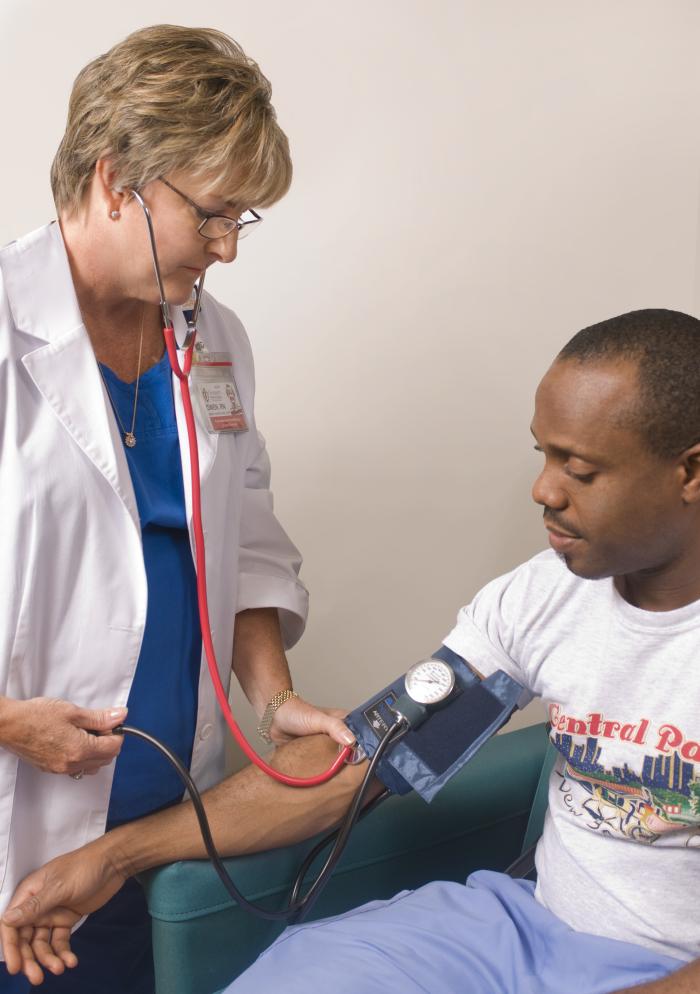As of this week,the AHA (American Heart Association) has released new recommendations on blood pressure that will lead to a significant increase in the diagnosis. Read More.
The new criteria will diagnose hypertension at 130/90 mmHG, while the previous standard was 140/90 mmHG. The American Heart Association feels they are taking a more proactive and preventative approach.
How does this apply to you?
For women and men under the age of 45, the rate of hypertension will increase 200-300%.
So this could be you. How can you manage your high blood pressure readings?
The AHA recommends “Lifestyle Modifications” as the first line of treatment.
What do they mean by “Lifestyle Modifications”?
1. Diet
Diet has been shown to reduce blood pressure by as much as a 11 points (systolic mmHG) as much as some medications. More specifically what changes in diet should you make.
Our recommendation
Increase Potassium to over 3000 mg/day.
Increase Fiber to over 35 g/day.
Reduce Sodium to below 1500 mg/day.
Try Incorporate some of these blood pressure reducing foods:
Avocado, Fish, Beets, Garlic, Bananas, Olive oil, Spinach, Plain Greek Yogurt, and Coconut
By eating fewer processed foods and eating as many fruits and veggies as possible, you can help control the early stages of hypertension with diet.
2.Weight Loss
More simply said than done.
But, with the proper meal plan and supervision many people can reach their goals.
Losing as little as 1 kg, or 2.2lbs, can reduce blood pressure by 1 mmHG systolic. So if you were to lose 20lbs, your blood pressure will likely see a decrease of 10 mmHG systolic.
Our Recommendation
Set small and achievable goals. First, aim to lose 5-10 lbs. Need additional help? Utilize your in-office nutritionist and make an appointment today.
3. Exercise
Moving as little as 30 minutes a day by walking or cycling can reduce blood pressure by 8/5 mmHG.
So my tip is to find what you love and do it! Whether it’s walking at the park, swimming, mountain biking, lifting weights, doing yard work or getting active with your kids.
Move as much as possible! Exercise is a privilege and a right. Exercise isn’t a punishment.
Our Recommendation:
Move for approximately 30 minutes a day. Aim to increase your heart rate if able to do so too!
4. Reduce Alcohol Consumption
Cut out the binge drinking. Reducing your alcohol consumption to a more moderate level, 2 or less drinks a day for males and 1 drink a day for females, can reduce blood pressure by 2-4 mmHG.
Our Recommendation:
Keep your drinking moderated and to more social gatherings, while staying hydrated by drinking water in between alcoholic beverages.
5. Sleep Hygiene
We all have heard to get consistent and adequate sleep.
Did you know that it can help protect your heart?
Proper sleep can lower our blood pressure as much as 8 mmHG systolic. Studies show that getting a sustained 7 or more hours of sleep a night can make a dramatic difference on our blood pressure, mostly by better regulating the stress hormones.
Our Recommendation:
Develop a solid sleep schedule. Improve your quality of sleep by turning off electronics an hour before bed, “closing the kitchen”, and establishing a meditation or mind clearing routine.
If curious about your sleep quality, try the free app Sleep Cycle.
6. Managing Stress
Managing your stress levels can have an immediate and prolonged effect on your blood pressure readings.
Easier said than done.
Our Recommendation:
Mindful techniques like meditation, yoga, gratitude journals, or writing. Some helpful mediation apps may be found for free such as:
Calm or Headspace.
7. Cutting out the Tobacco
Smoking or second-hand smoke can cause dramatic problems when managing blood pressure. First off, it can raise your blood pressure significantly. But, even more dangerous is the fact that it can harden and narrow your arteries simultaneously, increasing the risk of a blood clot.
Our Recommendation:
Stop smoking, practices like that of chewing gum, yoga, running, drinking water, and showering have been shown to help.
8. Omega-3-Fatty Acid (fish oil)
Omega-3-fatty acids have been shown in multiple studies to lower blood pressure through their potent anti-inflammatory capabilities.
Consume more fish oil through natural sources like salmon and through supplementation. In many cases, to reach 2000mg of the functional omega-3-fatty acids in fish oil, EPA and DHA, you need to supplement.
Our Recommendation:
Supplement with a high quality fish oil, high in EPA and DHA. We recommend our supplement OmegaHealth.
9. Limit caffeine consumption
Drinking a cup of joe can spike blood pressure up as much as 10 mmHG for 3-4 hours, but with time the blood pressure will drop back down. It’s not that caffeine is inherently dangerous, just the amount and frequency.
Our Recommendation:
Limit to no more than 300 mg caffeine daily, preferably down to around 100 mg.
This article is contributed by Spencer Safty, River Bend Medical Associates’ Clinical Nutritionist.


